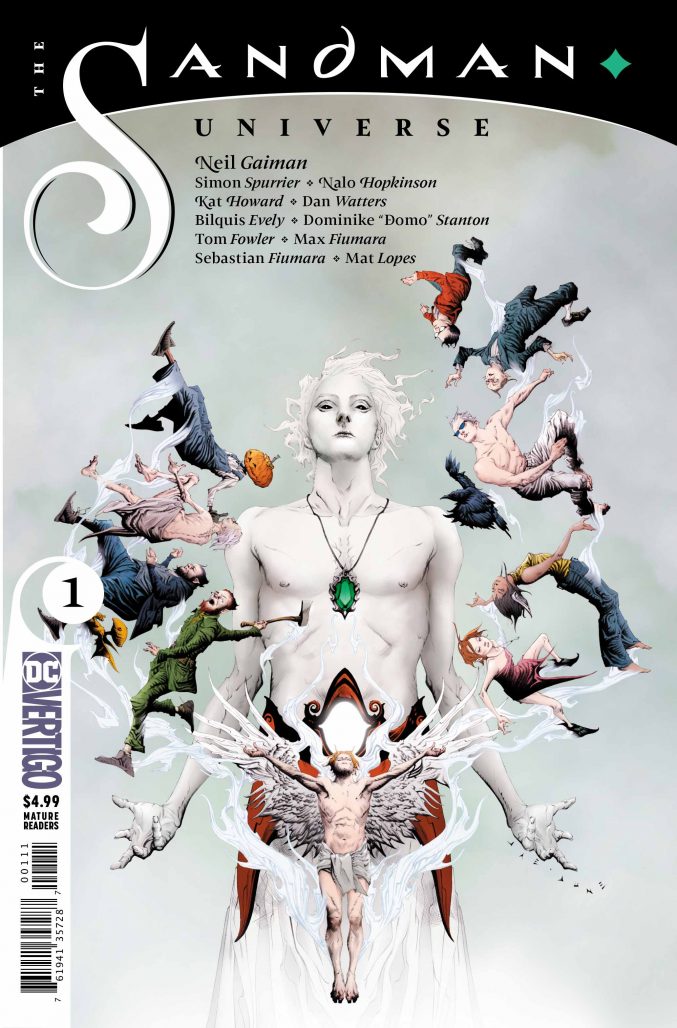
From 1989-1996, Neil Gaiman and a group of artistic collaborators including Sam Kieth, Mike Dringenberg, and more crafted The Sandman. This 75 issue DC Comics/Vertigo series followed Dream and his primordial siblings, who collectively formed the Endless, through imaginative and transformative stories steeped in classic mythology and boundless imagination. To this day, The Sandman remains one of DC’s most beloved series. And now, eager comics fans will have the opportunity to return to the Dreaming once again with this Wednesday’s release of Sandman Universe #1, a special one-shot that introduces a new line of Sandman stories to the world.
One of these new stories is House of Whispers. Written by notable fantasy and sci-fi author Nalo Hopkinson and drawn by Domo Stanton with colors from John Rauch, House of Whispers follows two sets of characters. The first is the Yoruba goddess Erzulie, whose House of Dahomey is “where the souls of Voodoo followers go when they sleep [in order] to beseech the flirtatious and tragic goddess to grant them their hearts’ desires and counsel them on their futures and fortunes.” The second is a group of four human girls in New Orleans who have stumbled upon a journal “filled with whispers and rumors” that threatens to unleash “Sopona, the loa lord of infectious disease.” Tied together by circumstance, Erzulie, cousin to Sopona, attempts to come to the aid of the humans, but finds herself in a crisis of her own as her House crashes into the Dreaming.
Among all the Sandman Universe titles, House of Whispers stands apart for its immediately apparent intent to pull from mythologies, cultures, and themes we haven’t seen explored in depth during previous Sandman stories. With a focus on female leads of color and an interest in exploring queerness, disability, and more, Hopkinson and Stanton are ready to build a decidedly modern house in the land of the Dreaming. And readers will have their first opportunity to see that house this Wednesday in The Sandman Universe #1, which features a section crafted by them with Mat Lopes on colors. Their section of the one-shot lays the groundwork for House of Whispers, whose first issue comes out on September 12th.
In celebration of our return to the Dreaming and in preparation to explore the House of Whispers, the Beat exclusively spoke to Hopkinson and Stanton to find out what their hopes are for the series and learn more about how they crafted their section of The Sandman Universe #1. Read on for an in-depth look at how Hopkinson and Stanton took one page of their story from concept to completion, featuring an annotated script from Hopkinson, process art, and an annotated final image from Stanton.
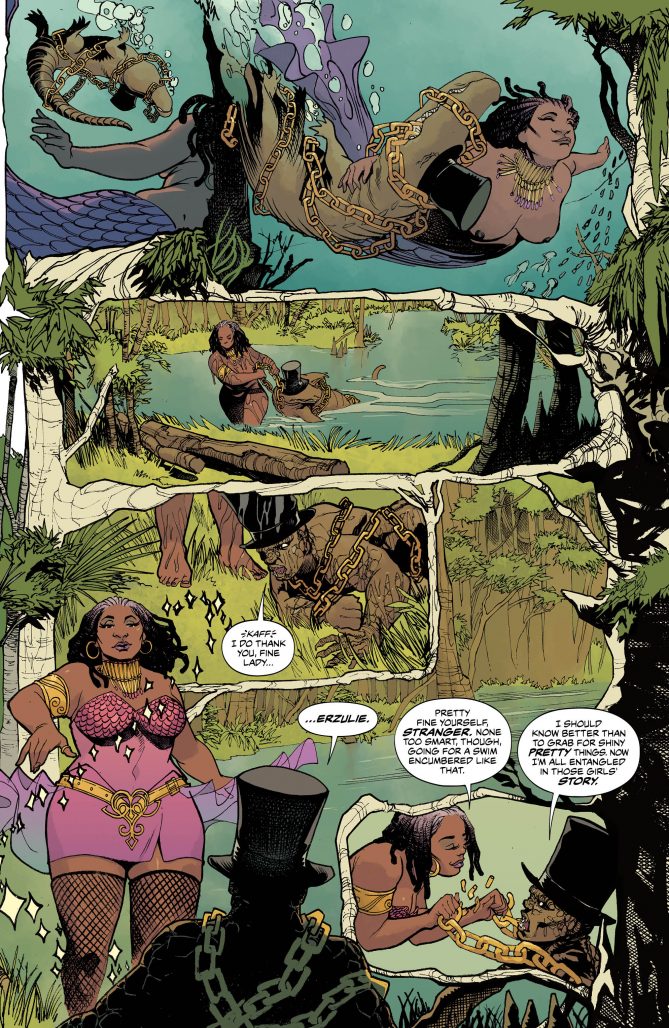
Influences
Lu: Domo, prior to starting work on the Sandman Universe line, what was your relationship with The Sandman like?
Stanton: Prior to working on the series, I hadn’t read the full 75 issue run, but Chris Bachalo has always been a major influence on my work as an artist and storyteller. I found Bachalo’s Death: The High cost of Living, which lead me to research the Sandman series in it’s entirety, where I came across The Sandman: Overture, featuring art by J.H. Williams. A lot of that work really stuck with me.
Lu: Nalo, you’ve spoken a bit about your relationship with Neil Gaiman and The Sandman in some other interviews. As someone who has written a great deal of fantasy yourself, what are the most essential elements of The Sandman in your mind that have made it such a timeless fantasy story?
Hopkinson: I’d say it’s the way in which it mixed the ancient with the contemporary. Neil took characters and from ancient mythology and modern-day comics, and culture-jammed them in fresh ways which are relevant to latter-day readers. Classic example is the character of Death: you can find Death personified in mythologies the world over, but Neil made Death into a pretty, wise kind and hip young Goth woman. That took a lot of people by surprise and they’ve loved the character for it ever since.
The Script
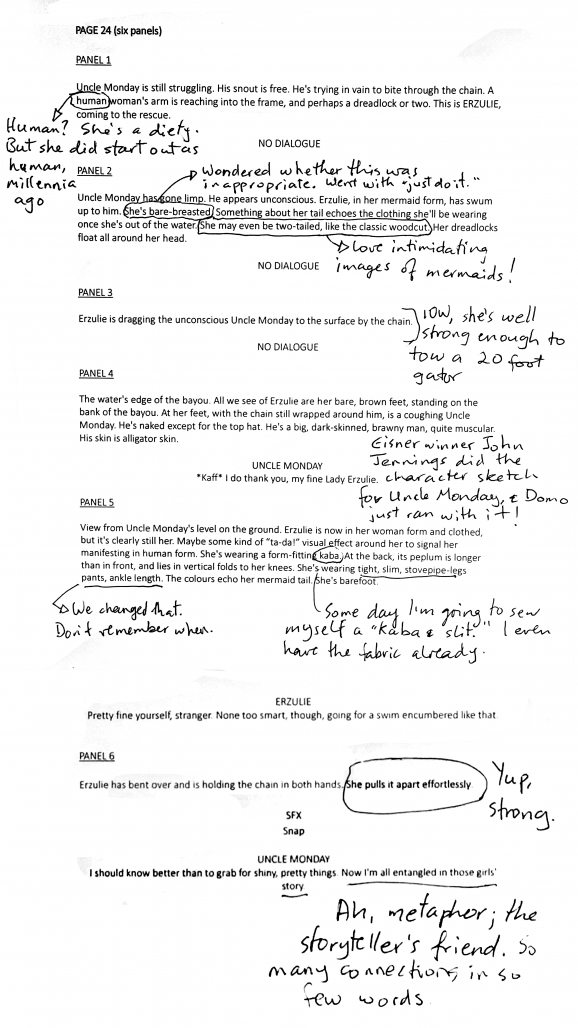
Lu: While capturing what makes The Sandman special is important to stories told within its universe, what’s equally, if not more important, is how you build upon it. What themes and ideas do you plan to explore with House of Whispers and how does telling that story in the Sandman Universe allow you to better convey those ideas?
Hopkinson: You know, I’m not sure where it’ll go? I discover what a story is by writing it, and I’m not even halfway through yet. I do know, given how important representation of marginalized experiences is to me, that I want to depict a plethora of identities. For instance: a variety of peoples of colour; a recognition that gender is neither binary nor fixed; a few different languages; and representations of people with disabilities. That’s what’s great about working with Domo Stanton as the artist for the interior pages– whatever representational challenge I throw at him, he runs with.
Lu: In some ways, House of Whispers inevitably stands apart from The Sandman, which was predominantly based in western mythology and whiteness (not to discount the many elements of inclusivity that were included in the original series as well). But your story hones in on elements from the Yoruba religion and vodun. Do you ever worry about trying to balance how to introduce these elements of African culture to those who might be unfamiliar with it (or only familiar with stereotypical western caricatures of it) against exploring these ideas in as much depth as possible? Or is the idea to simply dive in quickly and trust the readership to follow?
Hopkinson: I bring to the table a significant readership who will be quite familiar with both Yoruba -originated belief systems and with the Sandman. To them, I hope the stories Domo and I create for House of Whispers will feel like finally coming home. As to those for whom the Yoruba (and/or diasporic Black and Latino, and/or queer POC, and/or female) cultural signifiers are unfamiliar, I look at all the ways in which comics constantly challenge their readers with new worlds and new ways of experiencing this world, and I have to figure that a large part of the readership will be very eager for something that’s new to them.
What I worry about is that having a separate House and a mostly separate set of stories might start to feel as though the greater narrative of the Sandman has imposed a form of a far too familiar cultural/racial segregation. So I’m constantly on the lookout for ways to work some of the toys from the wonderful sandbox that is the Sandman into the mix. I suspect that Sean’s cover for issue 3 – Sean Andrew Murray is doing the covers for House of Whispers – will bring the mixing I’m aiming for home in one strong (and to me, endlessly amusing) visual punch.
Lu: The page we’re showcasing here features Erzulie and Uncle Monday. Nalo, can you tell us a bit about who these figures are and how what their journeys in House of Whispers will look like?
Hopkinson: Uncle Monday comes from Florida folklore. The way the story goes, he was an African magic man taken in slavery and brought to America. His magic was crocodile magic, and when he removed himself from slavery, the local Indigenous peoples – I’m going to say Creek and Seminole – welcomed him. They saw his magic as being kin to the alligator magic of their spiritual doctors. He eventually went to live in the swamp with the gators; the local peoples did a ceremony with him that transformed him into the largest of the gators. In my storyline, he and Erzulie have just met and are getting to know each other.
Maîtresse Mambo Erzulie Frèda Dahomey is an aspect of the deity Erzulie. She loves beautiful things and living in comfort. Yet she has a fierce, protective love for the humans who are dedicated to her. She’s very powerful, but she’s going to have most of her powers stripped from her in the beginning, when she and her House are mysteriously thrown into the Dreaming. She’ll face a ton of challenges as she attempts to return to the seat of her power and resume her godly responsibilities.
The Layouts
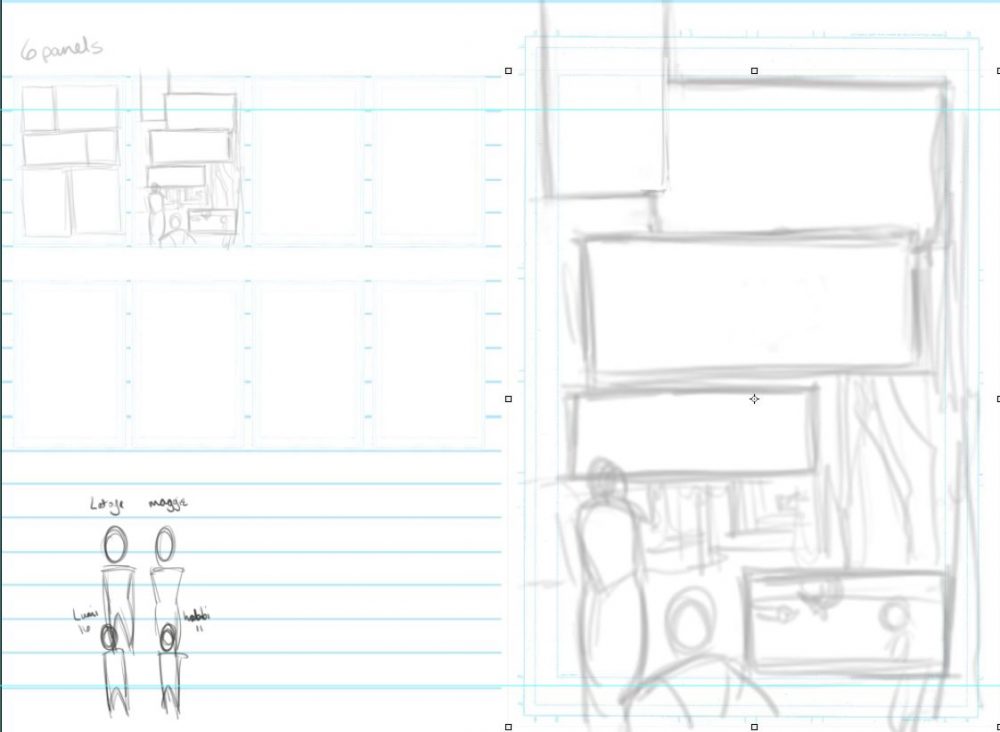
Lu: Domo, what is the creative dialogue between yourself and Nalo like? Looking at the script for the page we’re focusing on, it seems like, for the most part, your artwork stays relatively close to the spirit of what was written in the script. Do the two of you have a back and forth about the visual design of a page while Nalo scripts the issues? And how much room do you have to play and take things in your own direction once you’re in the process of drawing?
Stanton: There is a little back and forth between us, but there’s also a lot of trust. The script is fully worked out when I receive it, but that’s where I start to design, layout, and add my creative input. When I’m breaking down the script, along with the descriptions and suggested reference Nalo gives me, I like to thoroughly research everything before I start drawing. That way I’m the most informed and as accurate to what Nalo is looking for as possible. From there, as a comic artist and storyteller I may add, or take away or emphasize details or panels on a page given their importance to the story and overall design of the page. If Nalo has anything specific, or something different in mind from what I draw in the designs/ layouts, we talk about it with the editors, but for the most part she and my editors have been very trusting of all the work we’ve put together so far.
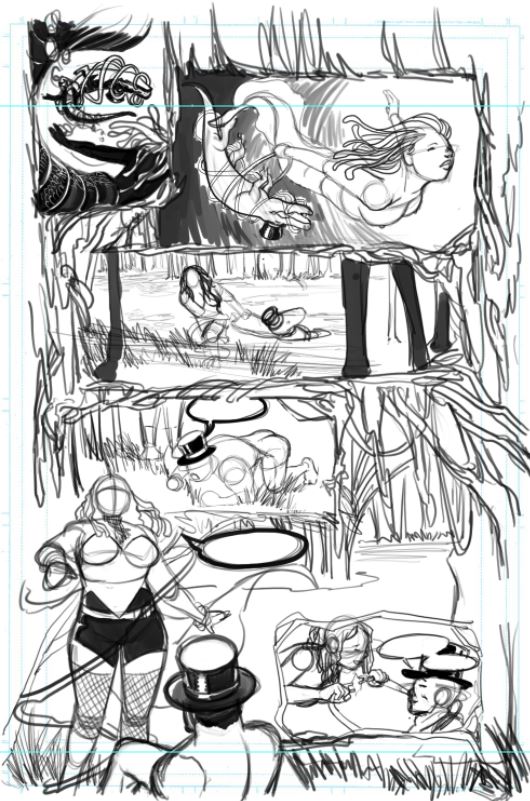
Lu: One place where we can see a change is in Erzulie’s outfit in panel five. In the script, Nalo writes that she’s wearing “tight, slim, stovepipe-legs pants, ankle length,” but you portray her with fishnet leggings below her kaba. What went into the decision to change her look and what does her new look convey about her character?
Stanton: Erzulie was one character I actually didn’t have a lot of input on. She was already designed on a cover that Bilquis Evely did featuring characters from All 4 books. I just took what she did and slightly tweaked it. I will say though, the new look I feel gives her somewhat of an elegant, regal feeling while still giving her the mobility of a warrior, who can kick ass and look good doing it. Which in the end is what Nalo was looking for.
Final Page
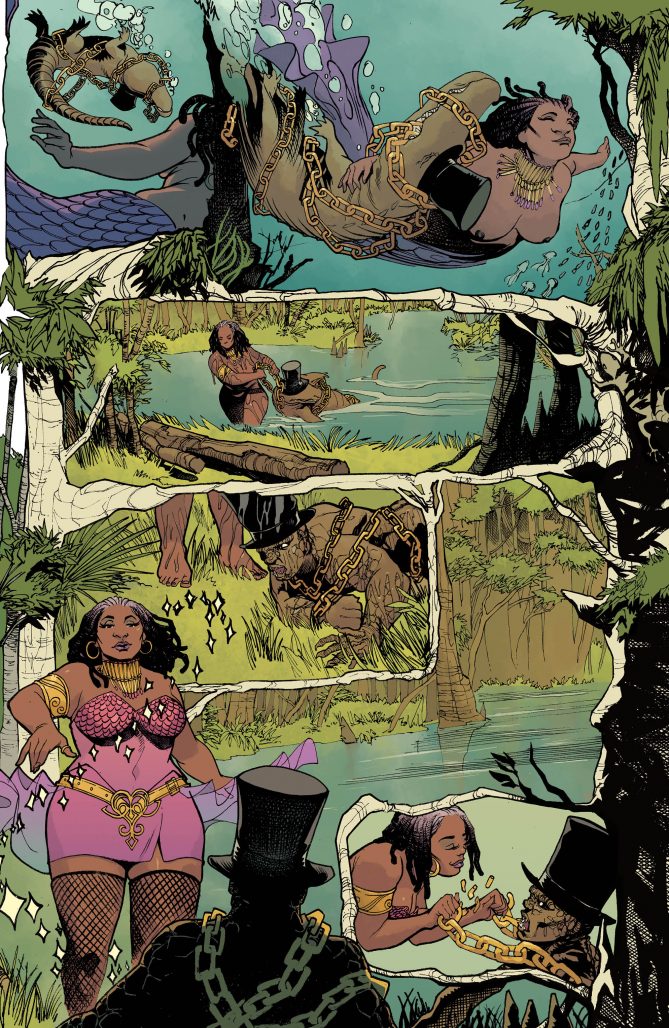
Lu: Nalo, how has your work with Domo and Mat influenced the story you’re telling thus far? Are there ways in which the visual team has rendered your scripts so far that have changed the way you frame certain scenes or changed a part of the story at large to play to their creative strengths?
Hopkinson: Mat Lopes was the colorist for the special that kicks off all four stories. John Rauch is the colorist for the series. It’s early days yet (I only just saw the inks for issue 1. But I can talk about working with Domo. He makes my ideas grander. It’s not just his exquisite artwork, but his sense of design. He’ll depict a panel from an angle I hadn’t considered, or create angular panels that ray outwards from the central image on a page, or fill the gutters of a page with the twisty branches of trees local to the area.
Another artist who had some input was the Eisner-winning John Jennings. He did the initial character design for Uncle Monday. I loved it so much I begged Vertigo to keep it, so now Domo’s working with that design. The Uncle Monday that John created has pushed me to a more disturbing and edgy view of Uncle Monday, and is definitely affecting the lines and actions I envision for him.
Lu: Domo, when you first saw Uncle Monday in your head, how was your initial interpretation different from what Jennings submitted? What changed, if anything, between his idea for the character and your final design?
Stanton: For Uncle Monday, Nalo reached out to her friend John Jennings, as she was familiar with his art and knew he would be able to get the look of what she wanted across. I had done an initial design sketch based on her description, but at that point was just brought on the project and not in direct communication with Nalo just yet. My initial design was more human than gator and a lot more friendly looking. I was able to get a better understanding of the look of Uncle Monday based on Jennings’ drawing, and from that I just took the intensity of his straight to the pages and ran with it in my own style.
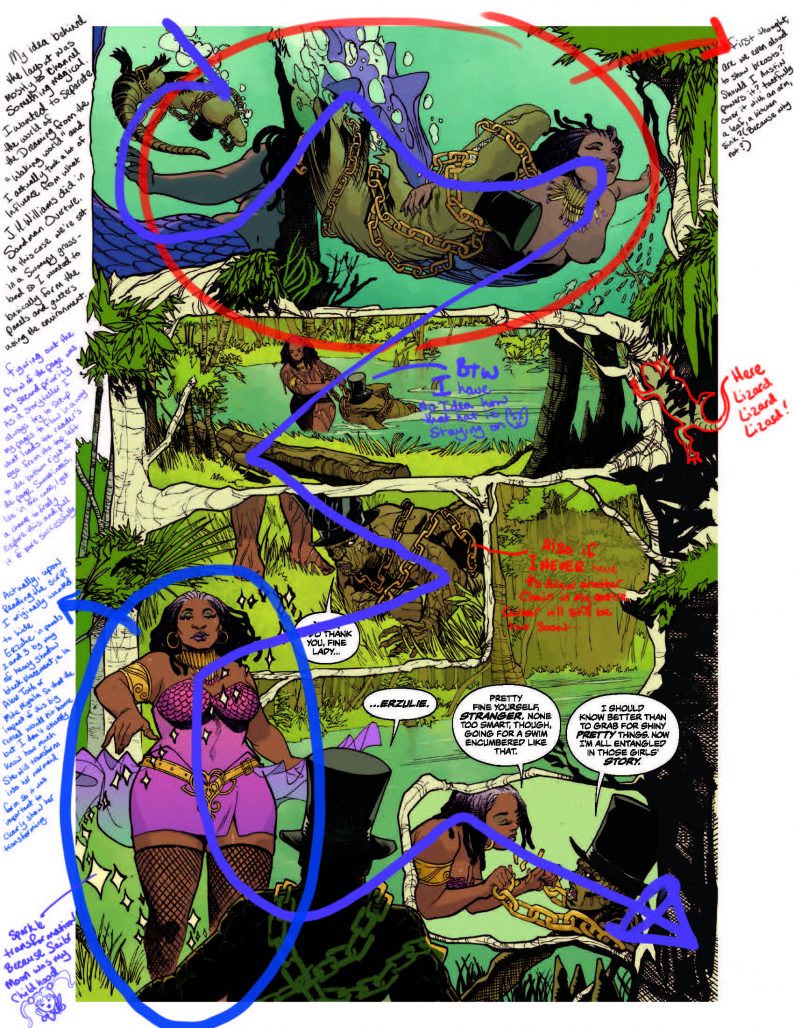
“My idea behind the layout was mostly to channel something magical. I wanted to separate the world of the Dreaming from the ‘waking world’ and I actually took a lot of influence from what J.H. Williams did in Sandman Overture. In this case we’re set in a swampy grassland so I wanted to basically form the panels and gutters using the environment.”
“Figuring out the flow of the page was my second priority as a storyteller. I always try to set up my pages to flow in a way that leads the reader’s from the top left to the bottom right of the page. Sometimes, like in this case, I get a chance to freely explore this and pull it off more successfully.”
“Actually, upon reading the script I originally wanted to hide Erzulie in panels 2 and 3 by way of heavy shadow black placement, a la Alex Toth or Mike Mignola so that the impact of this big reveal would hit home, but I don’t exactly know how much she will transform into her mermaid form so it was important to clearly show her transforming.”
The Future
Lu: I know that the story that you, Nalo, and rest of the creative team are telling in House of Whispers will open up and explore parts of the Dreaming that we haven’t seen before—with new anchors in the human world to guide that exploration. However, is there an old part of the Dreaming that you plan to—or hope to—explore during your time on the series?
Stanton: There is one part of the dreaming that I hoped to get to draw when I found out I would be working on the Sandman, and I got it immediately. As a Baltimore native and huge fan of Bernie Wrightson I just hope I can do the lovable sibling duo and their houses justice (if that’s any hint). Otherwise I’m hoping our characters somehow cross paths with Death and her world. Circling back to my adoration to Chris Bachalo’s work, I would love to get a chance to pay homage to his run on Death any way I can.
Lu: I think one of the coolest parts about having the opportunity to work on a Sandman title is having a nearly limitless amount of space for experimentation and play. Domo, we can clearly see that on display here between your inspired usage of foliage for panel borders and in the designs for Mister Monday and Erzulie. What’s been your favorite part of working on your part of The Sandman Universe #1 and House of Whispers so far?
Stanton: My favorite part of working on the series has actually been designing. So far I’ve been given the chance to show transformations, mermaids, parties and one of my favorite things which is chaos and destruction. But with this being an introduction to a lot of new characters and mythos to the Sandman Universe, aside from Erzulie and Uncle Monday, I’ve gotten much more opportunity to create and world build. It’s not only been fun, but a rare opportunity that artists don’t often get at a major publisher such as DC comics.


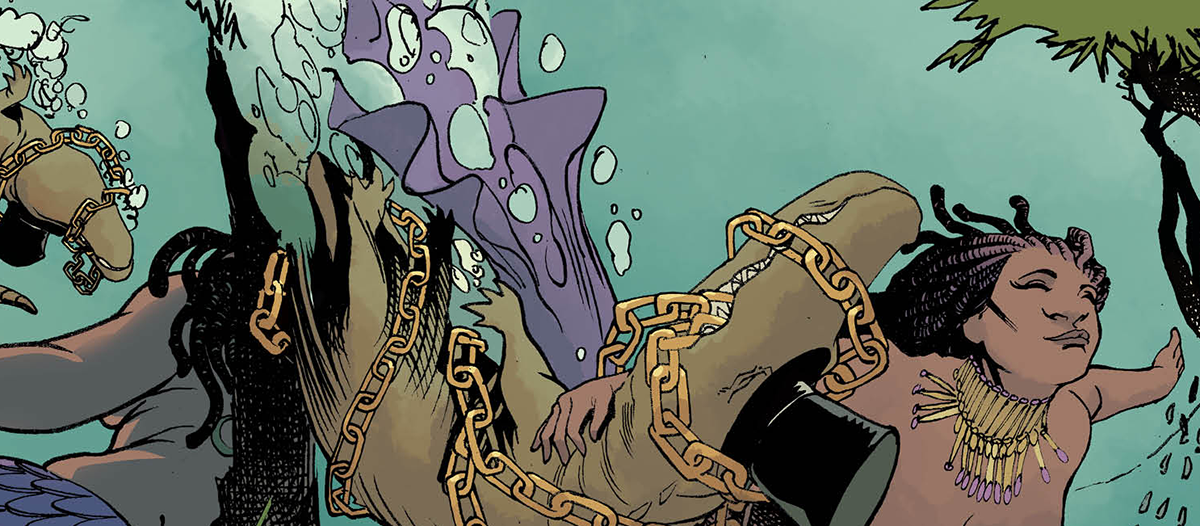

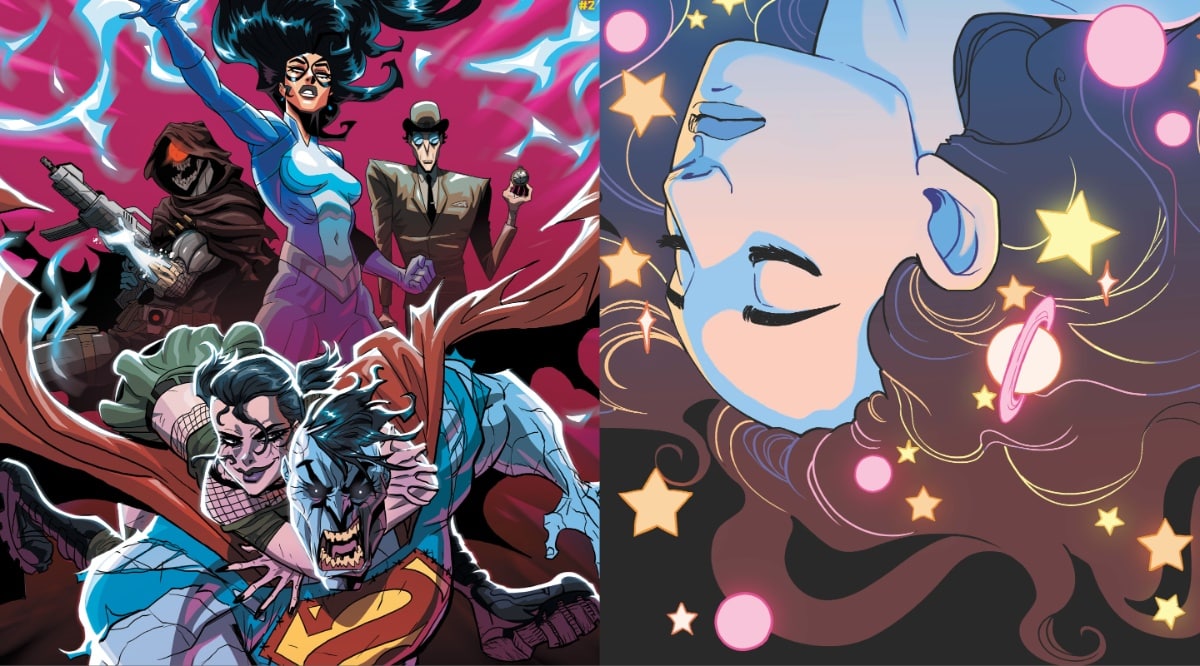




…Because Sandman wasn’t famous for being naturally diverse without patting itself on the back or anything…
Because it’s not like Sandman was already diverse but didn’t pat itself on the back for it…
I love diversity in comics but every time a news article points it out like it’s new or different, then it feels like you’re turning these characters into “The other” and congratulating yourselves for their presence like they’re strange and new and don’t belong. And to me that feels condescending and pandering.
The original Sandman had racial diversity, cultural diversity (deities from all over the world), Gay, bisexual, and transgender characters, and there weren’t any be announcements every time these characters were used like you were doing some great favor.
Also the strongest character in Gaiman’s Sandman lore was Death- Dream’s older sister. So Sandman had “Strong” “empowered” “independent” women already. (I’m so tired of these buzzwords men congratulate themselves for using)
I don’t like history erasure. Sandman already had cultural diversity, sexual diversity, and one of the strongest (and non-sexual) female characters in comic book history. Death. Don’t pretend Sandman didn’t have these things to begin with.
How can you normalize diversity when you suddenly start to treat it like something strange and new?
Imagine if Disney’s Gargoyles started today. How many articles would fixate on Elisa’s racial background like it’s something strange and news worthy that she exists?
Since I can’t find the edit button here’s the post corrected…
Because it’s not like Sandman was already diverse but didn’t pat itself on the back for it…
I love diversity in comics but every time a news article points it out like it’s new or different, then it feels like you’re turning these characters into “The other” and congratulating yourselves for their presence like they’re strange and new and don’t belong. And to me that feels condescending and pandering.
Also, the original Sandman had lots of racial diversity, cultural diversity (deities from all over the world), Gay, bisexual, and transgender characters, black, Asian, Native American, Greek, Jewish, and Islamic characters and there weren’t any big announcements every time these characters were used like you were doing some great favor.
Also the strongest character in Gaiman’s Sandman lore was Death- Dream’s older sister. So Sandman had “Strong” “empowered” “independent” women already. (I’m so tired of these buzzwords men congratulate themselves for using…)
I don’t like history erasure. Sandman already had cultural and racial diversity, sexual diversity, and one of the strongest (and non-sexual) female characters in comic book history. Death. Don’t pretend Sandman didn’t have these things to begin with.
How can you normalize diversity when you suddenly start to treat it like something strange and new?
Imagine if Disney’s Gargoyles started today. How many articles would fixate on Elisa’s racial background like it’s something strange and news worthy that she exists?
I like your post and argument, Amanda. I would slightly quibble with Death not being sexualised though. It’s a line-call, I know, because Death does nothing sexual. And I know that suggesting Death is sexual is objectifying her in her very existence/basic representation. However, I had a friend who liked Death… a lot. He also liked Harley Quinn. And Blink, from the X-Men. Jubilee too. Liberty Meadows, as well. I think the idealised goth-girl/waif was well represented in Death’s base popularity. Just remarking, or making an observation here; as I said, I like your overall points re Sandman.
Comments are closed.